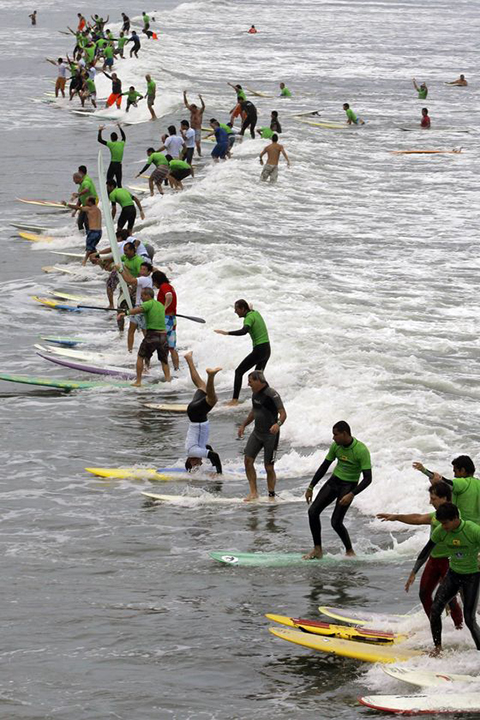Feb 02 2009
Is Baja Safe Again?
Photo: Mike Marincovich (Surfline)
The glory for surfer and their love affair for Baja ended abruptly in the fall of 2007 with repeated violent car jackings and a startling increase in violence and killings in Tijuana by drug gangs. The two were not unrelated. Baja fell off the map for most of us and most likely the magical beach breaks and points of Baja were left empty through 2008. Surfline discusses whether it’s safe to return. The short of it: not really. It’s still risky, but can be done when done right. Surfline article quoted below:
“Dedina cautions, however, that this doesn’t mean that surfers should not still be vigilant. Dedina also warns that just because Mexican police seem to be helping in the border corridor now, that doesn’t mean surfers should ignore the long history of corruption tied to police in the region. “Most police officers are not our friends,” Dedina said. “Just this past weekend, a WiLDCOAST staffer asked a Tijuana police officer for directions to the border, and he was extorted to pay $80 for parking ‘illegally.’ And longtime residents of northern Baja still advise on avoiding highway travel after dark.”
Polischuk seconds Dedina’s advice about staying off the roads after sunset, and is also still wary of the police. “Despite the current control of the Tijunana-Ensenada toll road corridor, you must still use common sense,” Polischuk said. “If the police puts his lights on, you drive to the nearest public area, Pemex station or small store. The police are aware of this practice and expect it. The car should be clearly marked.”…
Despite the progress in safety measures along the toll-road corridor, Baja is still growing increasingly more dangerous for surfers. Not because they are targets – they’re not – but because of the narco-criminal culture that infests Tijuana and Northern Baja. The Mexican government and Calderon administration have had virtually no effect on stemming the violence associated with the drug war. If, because surfers haven’t read or heard reports of attacks they begin to think the violence and instability in the region has been remedied, and return to Baja thinking it is the Baja of old, they run the risk of getting caught in the crossfire…
“Mexico is on the edge of the abyss — it could become a narco-state in the coming decade,” McCaffrey wrote. “The Mexican State is engaged in an increasingly violent, internal struggle against heavily armed narco-criminal cartels that have intimidated the public, corrupted much of law enforcement, and created an environment of impunity to the law.” He went on to opine, “Mexico is not confronting dangerous criminality — it is fighting for survival against narco-terrorism.” …
The message here isn’t don’t go, but rather, be smart when you go. “For an average surfer the sight and sounds of Baja may be a bit different,” Polischuk said. “You may hear some sirens; get passed by a speeding caravan on their way to mop up the latest violent mess. But remember, unless you have a coke addiction or are a gunrunner, surfers are not part of this violent cocktail of greed, power and money.”
According to Polischuk, that’s fine by him. The pros outweigh the cons in his book. “On most days I can surf alone or with a few people,” he said. “The experience of scoring empty point breaks and reefs, even on a weekend, is because most Americans are scared and staying at home.”


